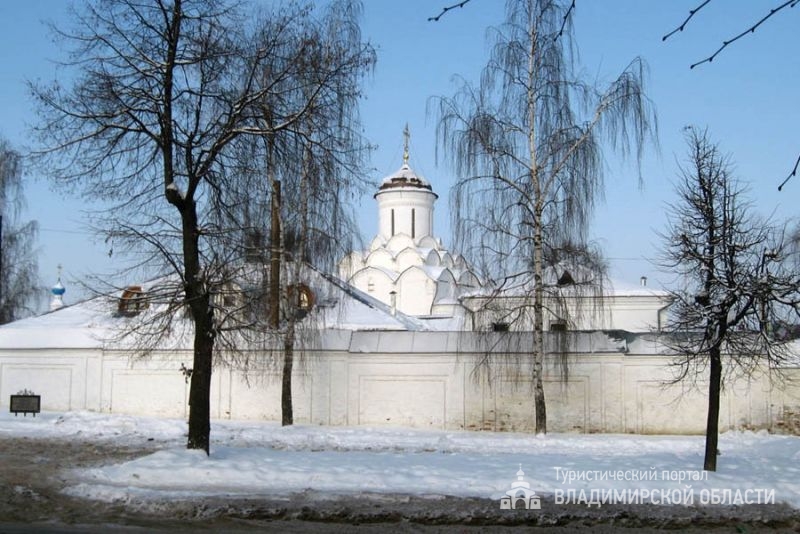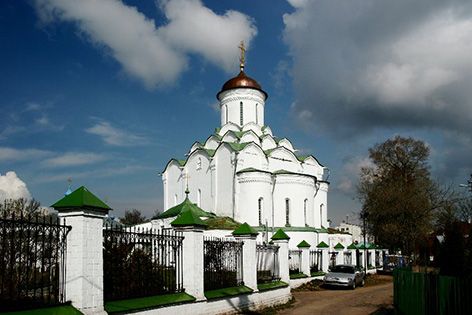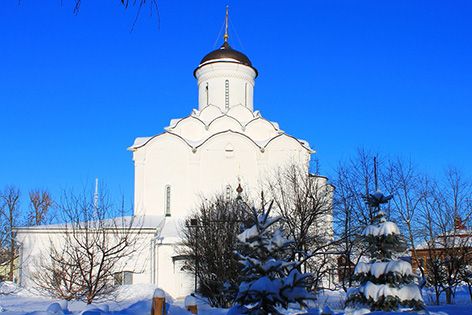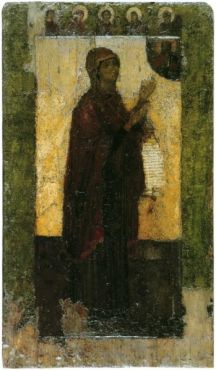Princess’ Assumption Monastery
The Princess’ Assumption Monastery is a women's monastery, located in the very center of the city of Vladimir. It was founded by the wife of Prince Vsevolod III the Big Nest – Princess Maria Shvarnovna at the turn of the 12th-13th centuries. Hence the convent began to be called the Princess’ Monastery.
Princess Maria of Vladimir, in monasticism – Martha, was born in the city of Maas, the capital of Orthodox Alania (the North Caucasus). Her father, the boyar Shvarn, is mentioned in the retinue of one of the south Russian princes. There is information that at an early age she remained an orphan and grew up in a kindred family of a Vladimir-Volyn prince. In 1174 she was married to the Great Prince Vsevolod Yurievich (Big Nest). In the marriage, she gave birth to 12 children, and four sons (Konstantin, Yuri-George, Yaroslav, Svyatoslav) later were the great princes of Vladimir. According to annalistic information, after the birth of the last son, Ivan, in 1198, the princess suffered an incurable disease and for over 7 years she endured suffering with truly Christian patience. During illness the princess was confirmed in the decision to accept monasticism and to found for this the first in Vladimir convent.
In 1200-1202 years, the Assumption Cathedral was built in the center of the monastery. In contrast to the white-stone Cathedral of St. Demetrius and the Nativity of the Virgin Cathedral erected by her husband Vsevolod III, the Assumption Church was built of brick-plinth, however in forms and proportions close to the traditions of Vladimir architecture. From the original building, only the foundation was preserved, on the basis of which (this is confirmed by archaeological studies) a large four-pillared brick church with two side-chapels was built at the turn of the 15th-16th centuries.
Its appearance, in essence, has survived to this day, despite some alterations of the 17th and 18th centuries. The temple was characterized by a complicated form of top – a two-tiered composition made of keeled zakomars and a crown of smaller in size kokoshniks, framing the base of the drum, which has a helmet head. This was the only building in Vladimir of such architecture. At the same time, the strict monastic cathedral did not have any sculptural decoration. Its white stepped silhouette beautifully towers over the entire neighborhood to the north of the Golden Gate.
The convent became a burial vault for representatives of many noble families, beginning with its founder, Princess Maria, who was buried in the southern wall of the northern gallery – the Annunciation side-chapel. There are also the remains of the second wife of Vsevolod III – Anna, and his daughter, Princess Elena. In the 13th century, both the wife and daughter of Alexander Nevsky were buried in the southern gallery – the Nativity of Christ side-chapel.
In addition, the convent was used to exile aristocratic prisoners, as well as the Intercession Monastery in Suzdal. Among them, for example, Pelageya Solovaya, the wife of prince Ivan, the son of tsar Ivan the Terrible, and also the daughter of Boris Godunov, Ksenia. Special rooms were built for them at the monastery – "the tsarina's mansions".
The interior of the cathedral of the Princess’ Monastery is distinguished by its rare beauty and picturesqueness due to the majestic frescoes of 1647-1648 by a major Moscow master Mark Matveev "with comrades", who had previously worked on the painting of the Moscow Assumption Cathedral. Cheerful, colorful painting, gravitating towards real household details taken from the surrounding world, significantly multiplies the artistic value of the Princess's cathedral. Religious plot compositions of frescoes, such as the "Last Judgment", created not a gloomy and monastic, but a joyful and life-affirming mood.
In the 20th century, the fate of the monastery has changed dramatically. In 1923, it was closed and subjected to confiscation of church values. Later, the bell tower and part of the fence were dismantled. In the post-war period after a long restoration, the frescoes of the Princess’ Assumption Cathedral became accessible to visitors of the museum that opened in it.
In 1993 the women's Holy Assumption Princess’ Monastery was re-established in the old place. The Diocesan Women's School (a subdivision of the Vladimir Theological Seminary) now operates at the monastery. Since 2001, there is also a children's shelter in the monastery, where about a dozen girls from 5 to 23 are raised, whose parents are deprived of parental rights or have died.
At the petition of Archbishop Evlogy in 1993 in the Assumption Cathedral of the monastery was placed the famous icon of the 12th century "Our Lady of Bogolyubovo", an Orthodox shrine, recognized as a monument of federal significance. The condition for the transfer of the icon by the Vladimir-Suzdal Museum-Reserve (VSMR) to the monastery for temporary storage was the establishment of a special glass-case, which provided a constant temperature-humidity regime favorable for the icon.
This oldest of the icons of the Vladimir land is considered miraculous and attracted a large number of pilgrims. However, in 1998, because of failures in the sensors of the storefront, the state of preservation of the monument began to cause alarm. The icon was moved to a new, climate-proofed glass-case made in Germany. But in the operating temple, even such measures did not save the unique monument from destruction (mold appeared, lag of the paint layer, peeling). The storage of the icon "Our Lady of Bogolyubovo" in the Princess's Monastery ended in the summer of 2009.
The icon with observance of special safety measures was transferred to a special room of the restoration workshops of VSMR. A comprehensive study was conducted, on the basis of which a method for the restoration of a unique monument was developed, applied by specialists of the All-Russian Art Research and Restoration Center named after I.E. Grabar. By the beginning of 2016, the main phase of scientific and restoration work was completed, but by decision of the Restoration Council of VSMR, a two-year monitoring of the Bogolubovo icon is needed, and a unique shrine will be temporarily closed for both believers and connoisseurs of Old Russian painting.
 Tourism portal of the
Tourism portal of the


